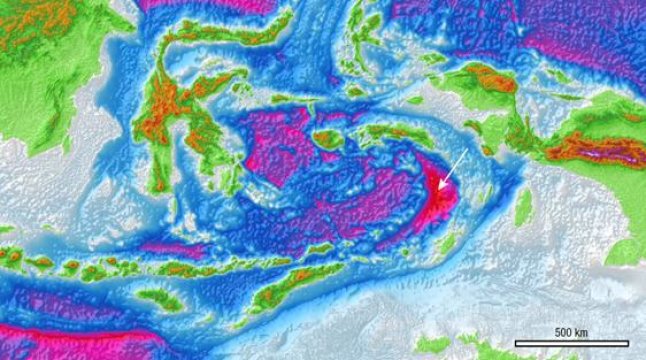@WFS,World Fossil Society,Riffin T sajeev,Russel T sajeev
Geologists have for the first time seen and documented the Banda Detachment fault in eastern Indonesia and worked out how it formed.
Lead researcher Dr Jonathan Pownall from The Australian National University (ANU) said the find will help researchers assess dangers of future tsunamis in the area, which is part of the Ring of Fire — an area around the Pacific Ocean basin known for earthquakes and volcanic eruptions.
“The abyss has been known for 90 years but until now no one has been able to explain how it got so deep,” Dr Pownall said.
“Our research found that a 7 km-deep abyss beneath the Banda Sea off eastern Indonesia was formed by extension along what might be Earth’s largest-identified exposed fault plane.”

Geologists have for the first time seen and documented the Banda Detachment fault in eastern Indonesia and worked out how it formed.Credit: Image courtesy of Australian National University
By analysing high-resolution maps of the Banda Sea floor, geologists from ANU and Royal Holloway University of London found the rocks flooring the seas are cut by hundreds of straight parallel scars.
These wounds show that a piece of crust bigger than Belgium or Tasmania must have been ripped apart by 120 km of extension along a low-angle crack, or detachment fault, to form the present-day ocean-floor depression.
Dr Pownall said this fault, the Banda Detachment, represents a rip in the ocean floor exposed over 60,000 square kilometres.
“The discovery will help explain how one of Earth’s deepest sea areas became so deep,” he said.
Professor Gordon Lister also from the ANU Research School of Earth Sciences said this was the first time the fault has been seen and documented by researchers.
“We had made a good argument for the existence of this fault we named the Banda Detachment based on the bathymetry data and on knowledge of the regional geology,” said Professor Lister.
Dr Pownall said he was on a boat journey in eastern Indonesia in July when he noticed the prominent landforms consistent with surface extensions of the fault line.
“I was stunned to see the hypothesised fault plane, this time not on a computer screen, but poking above the waves,” said Dr Pownall.
He said rocks immediately below the fault include those brought up from the mantle.
“This demonstrates the extreme amount of extension that must have taken place as the oceanic crust was thinned, in some places to zero,” he said.
Dr Pownall also said the discovery of the Banda Detachment fault would help assesses dangers of future tsunamis and earthquakes.
“In a region of extreme tsunami risk, knowledge of major faults such as the Banda Detachment, which could make big earthquakes when they slip, is fundamental to being able to properly assess tectonic hazards,” he said.
Citation:Australian National University. “Biggest exposed fault on Earth discovered.” ScienceDaily. ScienceDaily, 28 November 2016. <www.sciencedaily.com/releases/2016/11/161128132928.htm>
Key: WFS,World Fossil Society,Riffin T sajeev,Russel T sajeev



 December 2nd, 2016
December 2nd, 2016  Riffin
Riffin  Posted in
Posted in  Tags:
Tags: 